Korea in Winter 2024: A Local’s Survival Guide
Korea in winter is not the most common time of year to travel. However, traveling during this season means that you will have the opportunity to be a spectator at eccentric seasonal festivals, ski in the mountains of Pyeongchang, and see the country’s cities and temples covered beneath a blanket of soft white snow.
Visiting Korea in Winter: The Weather
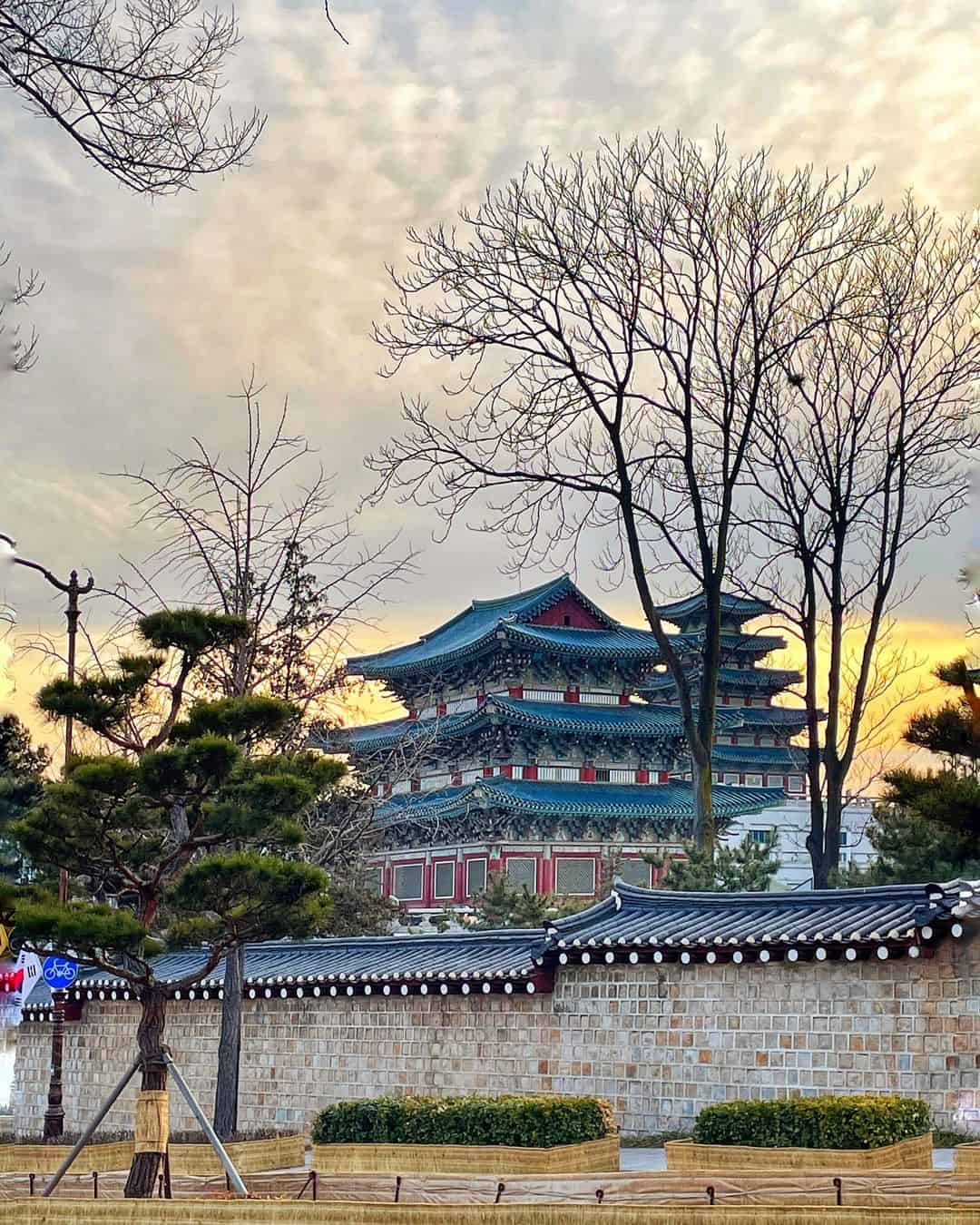
Winter in Korea might sound like something out of a fairy tale. The reality is that the country can get bitterly cold during this time of year.
The winter season runs from November to late February. Precise temperatures and weather conditions vary depending on whereabouts in the country you go.
In Seoul, Paju, and other northern areas of South Korea, it is not uncommon for temperatures to dip as low as minus fifteen degrees Celsius. The average daily temperature ranges between -7° and 5° Celsius.
However, of course, there are anomalies and days when the weather gets much colder. January is typically the coldest month of the year.
Unless you grew up in, say, Russia, Mongolia, or Northern Canada, you will probably find Korean winters pretty chilly. Things get a little milder as you head further south (e.g., Busan, Gyeongju or Jeju island). Here you can expect average daily temperatures between -2° and 10° Celsius.
You don’t have to completely write off Korean travel during this period though. There are many incredible seasonal events and festivities that happen at this time of year that make braving the icy temperatures worthwhile.
Places to Visit in Korea During Winter
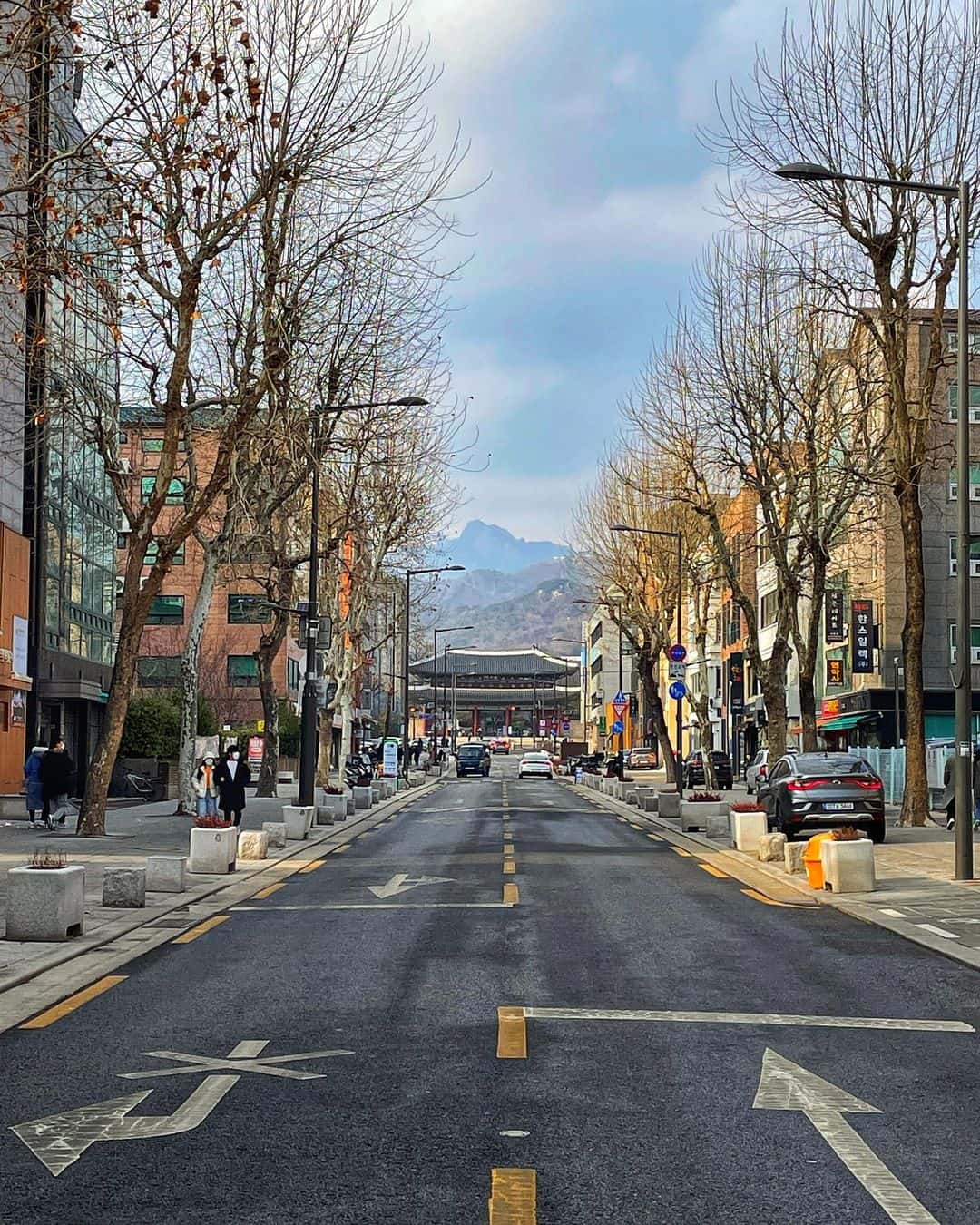
There are numerous unique things to do and places to visit in Korea during winter that make Korea in December and beyond truly magical. Some of the country’s festive highlights are detailed below.
Cosy up in the tearooms of Insadong
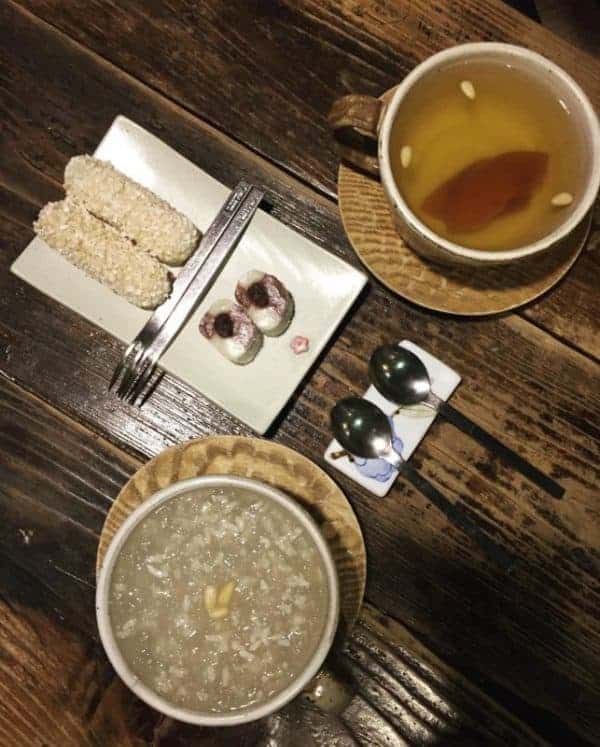
The charming tea rooms of Insadong and Bukchon offer the perfect, cosy escape from the cold wintry conditions of Seoul. Insadong is a charming traditional neighbourhood set in the heart of the Korean capital.
The area as it stands today has existed for more than 500 years and was initially built as a residential district for Government officials. Today, Insadong’s leafy, tree-lined streets are filled with grand, Joseon palaces, art galleries, antique stores, and quaint tearooms.
One of the best ways to warm up in Korea in winter is to head into one of the many tearooms in this area and treat yourself to a pot of traditional tea. Korean teas are fruity and sweet.
They are often thicker and more syrupy in texture than your average tea and are made with natural ingredients to address a range of ailments. Try the thick apricot tea served with a side of sticky sweet rice cakes, it’s a winter favourite.
Not sure which tearoom to choose from? The Moon Bird Only Thinks of the Moon (60 Gwanhun-dong) and Chatjip teahouse (33-1 Insadong-gil) are among the best in the area.
Seogwipo Penguin Festival
The Seogwipo penguin festival is likely one of the most unique and strange things to do during winter in Korea. Actually scratch that, it is one of the most strange things that you could do anywhere ever!
Don’t let the name fool you. The Seogwipo penguin festival has nothing to do with penguins, and everything to do with locals stripping down to their undies and embarking on a swimming race in the icy cold waters close to Jeju island. So yeah, that’s a thing.
If you’re brave enough, you can participate. If you manage to survive, you can warm up again after the race with a nice hot bowl of kimchi jjigae and a snuggly blanket.
Visit Seoul’s themed cafes
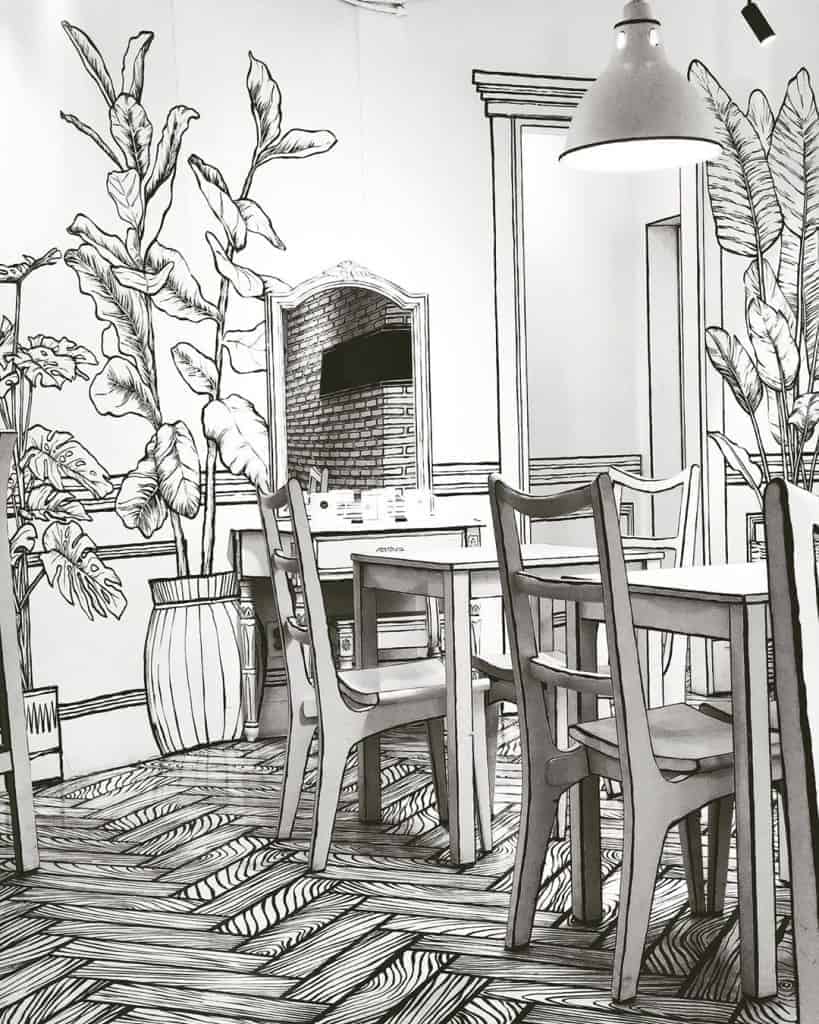
Between avoiding blizzards and sightseeing in Seoul, the Korean capital’s many themed cafes and coffee shops are great places to warm up in Korea during winter. The coffee culture in Seoul is huge and it often feels like new cafes are popping up every other week here.
Quirky coffee shops are situated on every corner and follow every theme imaginable – from the cute and quirky, to the downright strange. If you prefer a good strong cup of coffee over an Instagrammable location, head to Hell Cafe (238-43 Bogwang-dong, Yongsan-gu).
Some of the most well-known and respected baristas in Korea work here. They prepare smooth, velvety drinks prepared with coffee beans from across the globe – from Mexican Chiapas coffee to Colombian beans.
For somewhere unique and quirky, head to Dinga Cake House (68 Donggyo-ro 29-gil, Mapo-gu). This colourful, cosy property looks just like a Barbie Dream House and serves all manner of weird, wonderful and photogenic drinks and cakes.
Think cakes designed to look like watermelons, cakes that look like hamburgers, etc. It’s a fun place to visit and better yet, the food and drinks are delicious!
See the light show at Herb Island
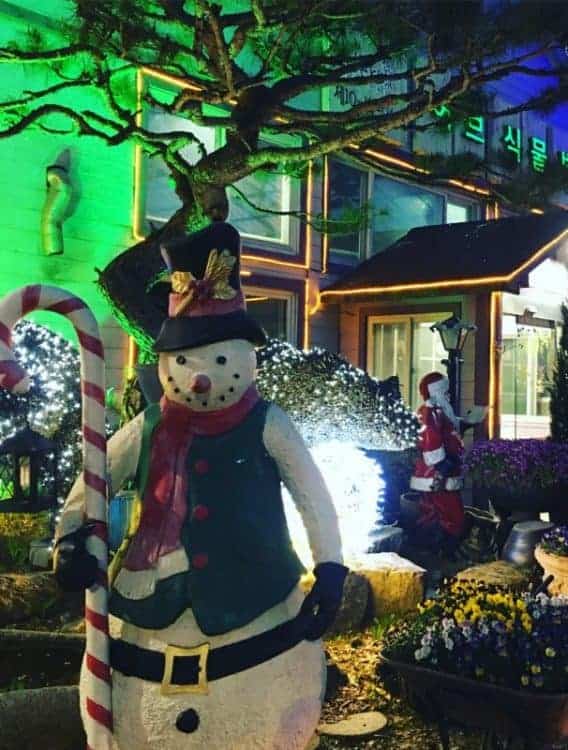
A little north of Seoul, the Herb Island light show at Pocheon City is a great event to attend to get yourself into the festive mood. Herb Island is a Mediterranean-themed amusement park that can be visited at any time of day.
However, the ambience in the evenings during the winter is particularly special. The show sees the area illuminated with tens and thousands of twinkling fairy lights, as well as festive lights depicting Santa Claus, Snowmen, etc.
You can expect to see entire fields of artificial flower lights, trees decorated with every colour of the rainbow, and daily performances and shows. This is one of the most romantic places to visit in Korea during the winter.
The light show runs all year round. You should expect to spend 3-4 hours at the park.
The show ends at 22.00 pm nightly and admission is 9,000 won, with concessions available for the elderly, young children, and other applicable visitors. If being outside for a long period feels too unbearable in the cold, you can always warm up with some Korean street food sold at the many stalls here!
Stay in a traditional Hanok house
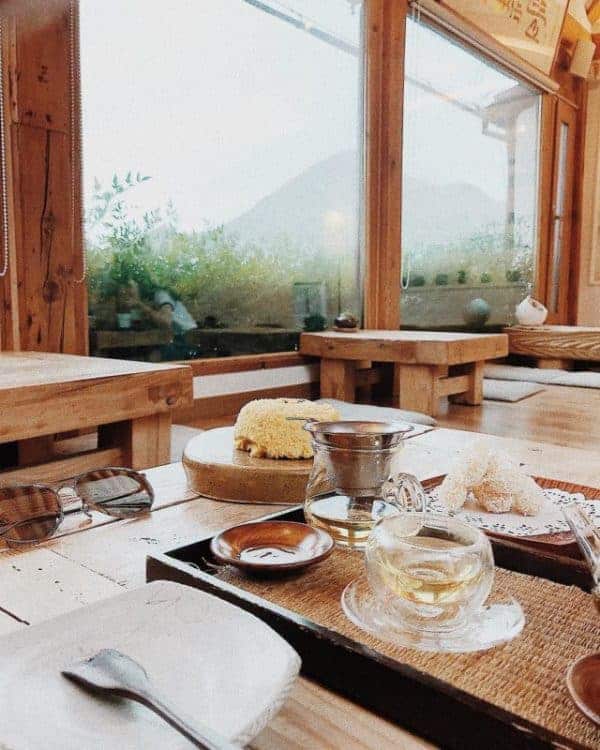
Staying in a traditional hanok house is one of the most quintessential Korean experiences that you can have in the country. Opting for this type of accommodation becomes especially comfy in the winter months.
Hanok houses are traditional Korean houses that were originally built during the 14th century to house nobility. Staying here entails sleeping on a futon bed (comfier than it sounds) on the heated floor.
The Bukchon Hanok Village in Seoul and the Jeonju Hanok Village are both great choices for a hanok stay experience during your Korea itinerary. You will find an abundance of properties available in both areas.
The insides of traditional hannok houses are comfortable, cosy and stylish. Some establishments, like Bonum 1957 boutique hotel in Seoul (53 Bukchon-ro, Jongno-gu) go above and beyond to offer an additional level of luxury.
Attend the Pyeongchang Trout Festival
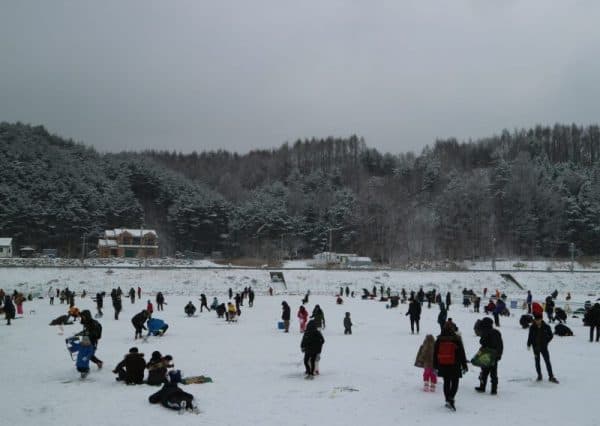
It’s not very often that you get to try your hand at ice fishing and feel like an Eskimo for the day. Actually, the Pyeongchang Trout Festival is much more than the name suggests.
Visitors can participate in a diverse range of winter activities here – from snow tubing and sledging to ice skating. The main attraction of the event is of course ice fishing.
Holes are drilled into the ice and you can sit by the side to try your luck catching a trout. There is also bare-handed fishing if you’re not worried about losing your fingers to frostbite!
Whatever you catch at the festival, you can have cooked and prepared at one of the little pop-up restaurants on site. That way, you can warm up with delicious grilled trout washed down with soju. There are numerous tour companies that arrange excursions to Pyeongchang Trout Festival from Seoul like this one.
Have a spa day at a Jimjilbang
Korean jimjilbangs are traditional bathhouses that could in many ways be compared to Turkish hammams. They are the perfect place to go if you want to treat yourself to a spa day while trying something new at the same time.
Jimjilbangs are steamy hot baths that are infused with various herbs and fragrances. Many of the herbs and ingredients used in the baths are said to provide healing properties and soothe various ailments.
Jimjilbangs are a beloved part of Korean culture. You can find them in practically every neighbourhood of every city during your Korea winter trip.
So, you don’t have to venture far to find one. Siloam Sauna and Spa Lei are great jimjilbangs in Seoul, although the latter is for women-only.
The admission price for visiting jimjilbangs is often as low as around 14,000 won ($10.70) and you can use the facilities for up to 8 hours. Consider treating yourself to a facial, a massage, and a Korean body scrub while you are there!
Visit the Taebaeksan Snow Festival
The Taebaeksan Snow Festival is a free annual festival that is hosted in the city of Taebaek. This is a small city in the Gangwon province of Korea, just an hour southeast of Seoul.
The highlight of the festival is the giant structures that have been carved into the snow and ice. Many are incredibly detailed. For instance, gigantic ice carvings of Gyeongbogung and various Joseon palaces.
There’s also a delightful snow cafe where the tables and chairs are made from blocks of ice. For just 3000 KRW, you can warm up with a delicious cup of hot cocoa.
Several tour companies lead trips to Taebaeksan from Seoul. It is advisable to book early online in advance.
Take a trip to Jeju Island
Beautiful Jeju island is often referred to as being the “Hawaii of South Korea”. This is one of the best places to visit in Korea if you like hiking and immersing yourself in nature.
Jeju is a great winter travel destination. Not only is Jeju warmer than Seoul, but it also boasts plenty of winter activities that are not affected by the colder weather.
If you decide to plan your Jeju itinerary for the winter months, you will find that the island’s attractions do not close. Even places like Mount Hallasan and the Olle hiking trails remain open. What’s more, Jeju boasts countless indoor museums.
If it coincides with your travel dates, don’t miss the Jeju winter festival. The festival takes place on Mount Hallasan and runs from December 20th – January 6th every year.
Expect to see live Kpop performances, street food markets and local artisans presenting their wares. During this time, a sequence of after-parties and events are hosted at bars and clubs nearby.
Go sledding at Everland
Everland, located in Yongin, is South Korea’s largest theme park. Think of it as the Korean Six Flags if you will.
During the Korean winter season, several seasonal attractions pop up at Everland. The “Snow Buster” is a particular highlight.
This is a huge snowy hill that travellers can sledge or tube down. Snow tubes can be rented and there are numerous “tracks” that you can go down. Some are curved and winding, some go straight down at breakneck speed, etc.
Once you’ve had your snow tubing fill, you can warm up in the nearby Korean cafe with some delicious steamed mandu (Korean dumplings). Wash them down with an inexplicably strong cup of soju.
Get tickets to the Inje Ice Fishing Festival
The Ice Fishing Festival in Korea’s rural Inje county is similar to the Pyeongchang Trout Festival. The highlight of attending the festival is trying your hand at ice fishing.
If the Pyeongchang festival does not coincide with the dates of your Korea winter trip, this is a nice alternative. 2023 will mark the 23rd year of the event taking place. The exact dates are still to be confirmed but it is expected that the festival will take place in mid-January.
See the Seoul Lantern Festival

The Seoul Lantern Festival is an annual event that takes place along the banks of the Cheonggyecheon every year. The festival sees tens of thousands of handmade lanterns set up along the stream and beautifully illuminated.
The festival typically takes place during the first two weeks of November. It is well worth stopping by if it coincides with your Seoul itinerary.
The lanterns depict every scene and object imaginable. For instance, you will find giant, towering lanterns that represent Korean landmarks and buildings, as well as lanterns in the form of popular movie and book characters.
People from various countries across the world submit lanterns for inclusion. The festival tends to follow a different theme each year.
Go hiking
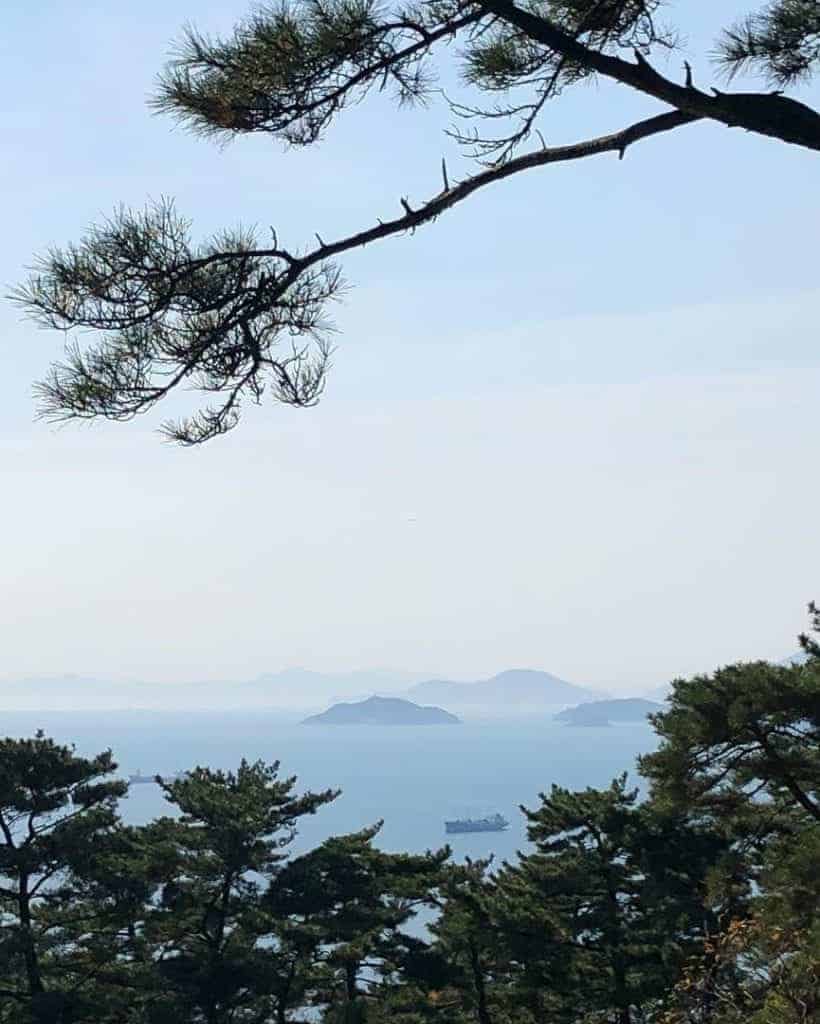
Hiking is essentially the national pastime of Korea and is enjoyed year-round. Though the snow and ice can make some of the more challenging hikes inaccessible, there are still plenty of trails that can be enjoyed during this time.
Frozen lakes, and mountain temples covered in a blanket of fresh white powder transform Korea’s national parks and mountains into a magical winter wonderland. Bukhansan and Taebaeksan are both stunning places to visit in Korea during the winter.
Try your hand at skiing
Whether you’re a snow bunny or an absolute beginner that has never tried skiing before, there is no better place to try your hand at the sport for the first time than during the Korean winter season. Ski resorts can be found scattered across the country.
Pyeongchang – the place where the Korean Winter Olympics were held, is a popular spot for locals and offers great resorts and facilities. Equipment rental is available, as are lessons for beginners.
For alternative ski destinations, consider one of the resorts situated in Hong Cheong or Muju county. Various tour companies organise day trips and excursions to Korean ski resorts.
These are perfect for solo travellers in Korea also, as they provide a great opportunity to meet travel buddies during a weekend away.
Spend a long weekend in Busan
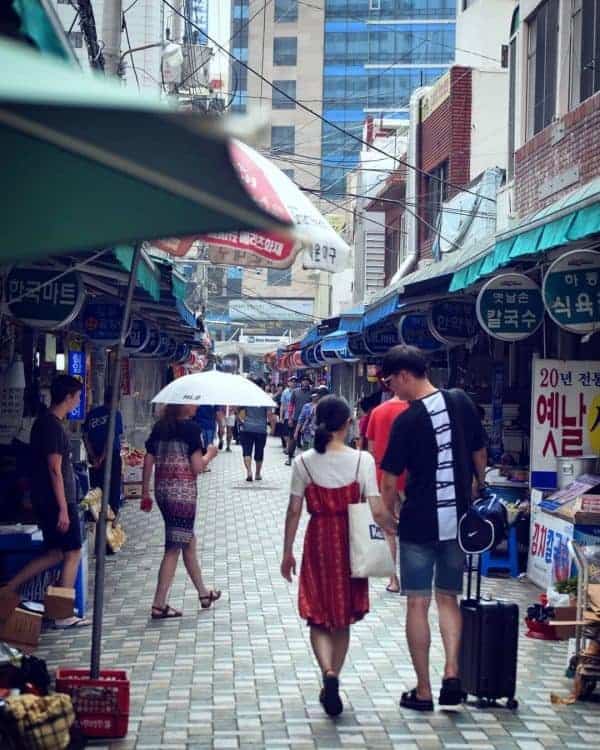
There is no such thing as a bad time to visit Busan and considering the fact that this is one of the mildest places in the country during the winter months, it can be a good place to escape. This is South Korea’s second city, home to a population of just under 3.5 million people
Culturally, Busan feels very different to Seoul. This beautiful coastal city is home to majestic, jagged mountain ranges, miles upon miles of pristine sandy white coastlines, natural hot springs, and serene Buddhist temples.
If you consider yourself a foodie traveller, there are several local markets and food streets that you should have on your radar here. Seomyeon Food Alley is known for its cold noodles. A particularly good place to try the delicacy is at 서면 개금밀면 (39 Seomyeon-ro 68beon-gil, Busanjin-gu).
At Jokbal Alley, you can try marinated pig trotters. However, arguably these are better suited to the more adventurous eaters!
A visit to the clifftop Haedong Yonggungsa Temple and its iconic smiling gold Buddha statue is a must. While it is a little too cold to enjoy the beaches of Busan, you can still enjoy a scenic walk along the coast if you wrap up warm.
Go ice skating in Seoul
As winter creeps in, more than a dozen skating rinks pop up in scenic locations across Seoul. What could be more magical than skating beside the Han River against a backdrop of glittering skyscrapers and centuries-old temples?
There are dozens of ice skating rinks scattered around Seoul and wider Korea. Some scenic rinks to consider are:
- Yeouido Ice Park
- Grand Hyatt Seoul Ice Rink
- Olympic Park Ice Rink
- Seoul Plaza Ice Rink
- Seoul Arts Center Ice Rink
- Sheraton Walkerhill Ice Rink
Marvel at the Garden of Morning Calm illuminations
The Garden of Morning Calm is a beautiful private garden that is nestled within the mountains of Korea’s Gapyeong County. It spans an area of 30,000 m2 and consists of several different themed gardens.
For instance, a Japanese bonsai garden, a Chinese water garden, etc. Every winter, the garden is illuminated with thousands of twinkling lights. Wander beneath illuminated arch tunnels, and marvel as the lights flicker and dance to KPop classics.
Take a Korean cooking class
Taking a Korean cooking class can be a nice way to escape the blistering cold during the winter months. Not only is the experience fun in itself, but you will also learn new recipes that you can wow your friends with back at home when you decide to have people over for dinner.
Most cooking classes also typically include a visit to a local market so that you can source all of your ingredients. If you are in Seoul, this may be the famous Gwangjang market or the fish market of Noryangjin. In Busan, this could be the Gukje market.
Dishes such as Kimchi jiggae and bulgogi are relatively straightforward to make. You can also opt to take a kimchi-making class.
Most countries are home to a Korean supermarket or two. So depending on where you are from, it ought to be relatively easy to replicate the dishes again when you get home.
A number of reputable Korean cooking classes are detailed below for your consideration. Book online in advance to secure your place!
- Busan: small-group traditional Korean food cooking class
- Seoul: Korean cooking class at a local home and market tour
- Seoul: Noryangjin fish market and historical park tour
What to Wear in Korea in the Winter & Suggested Packing List
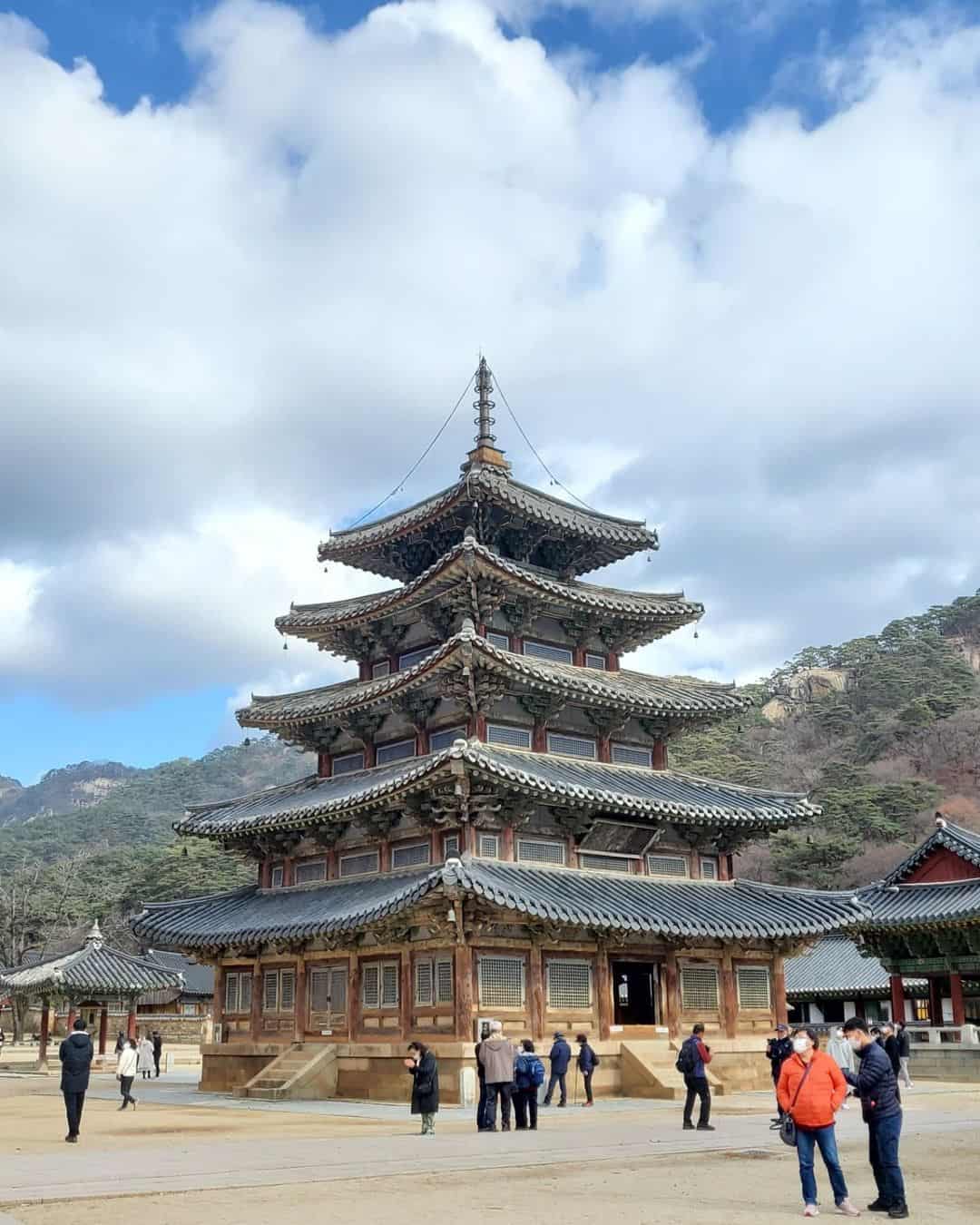
If you travel to Korea in the winter, you should pack your winter wear. In other words, take a coat, your gloves, hats and scarves, thick socks and plenty of jumpers and long-sleeved tops.
If you arrive in Korea ill-prepared then don’t worry. There are plenty of places where you can go shopping in Seoul and elsewhere to pick up comfy winter clothes.
One thing to look out for in particular are the fleece-lined sweaters and pyjamas that are sold at markets and on the stalls at the subway stations. Korean fleece-lined sweaters and pyjamas unlock a whole new level of snuggly. The items sold at these places are relatively cheap and good value for money.
Another suggestion is to always wear thermals beneath your regular clothes when hiking or spending extended periods of time exploring outside. If you forget to take these with you, it’s worth checking out the heat tech clothes sold at Uniqlo.
A Korean Winter Packing List
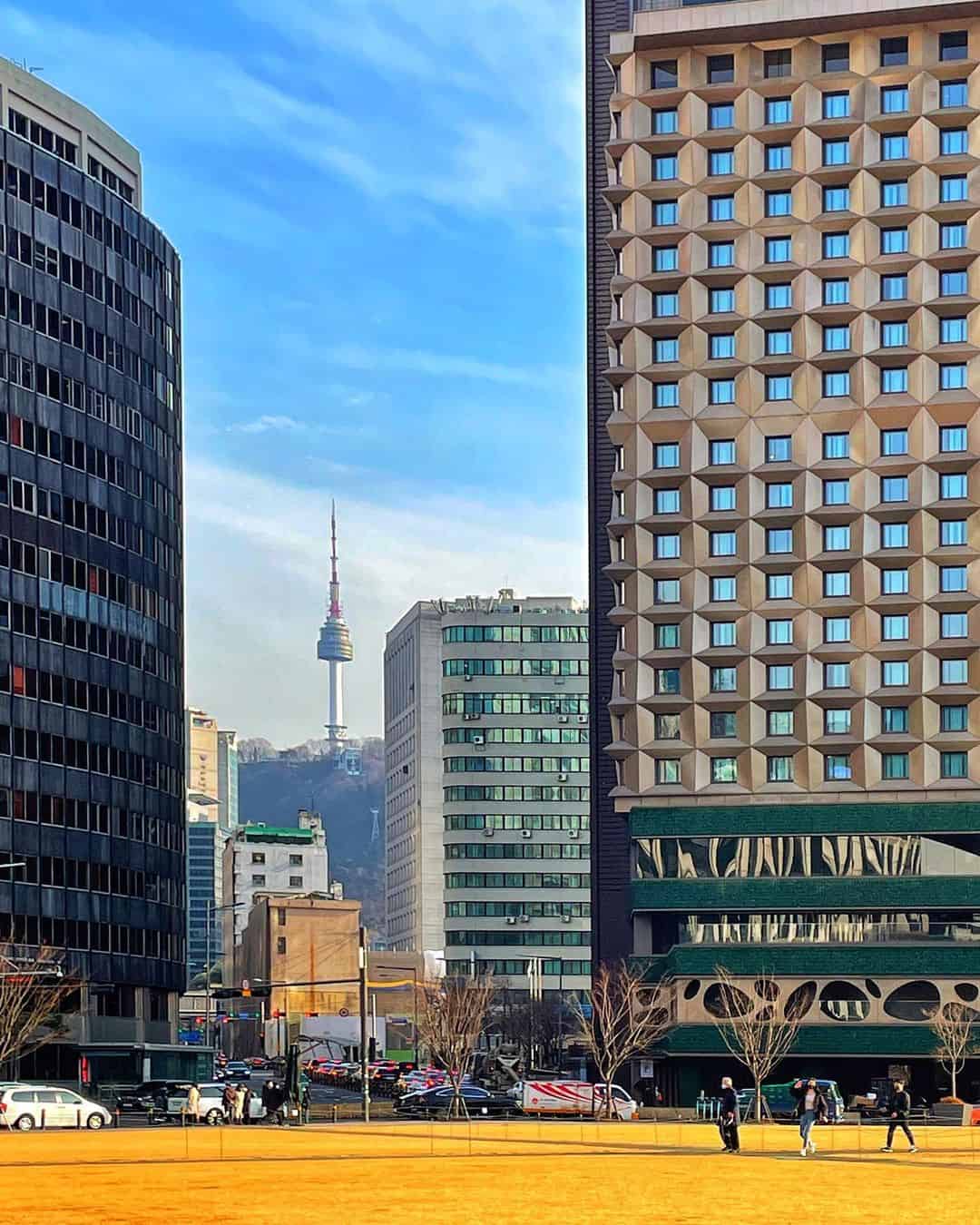
Never underestimate how cold it gets outside during winter in Korea. At the same time, be advised that many restaurants, cafes, and jimjilbangs will put their heating on full blast.
The best approach is to make like an onion and layer up. That way you can easily add or remove layers as necessary and you’re not sweating like a beast indoors.
Compression bags and packing cubes
Unfortunately, winter clothes are bulky! The clothes that you need for a winter trip can wind up taking up the same amount of space as 3 times that amount of summer clothes.
This is particularly annoying if you are trying to travel light with just a carry-on, or you are travelling to several different countries on one trip, each with different climates. Use compression bags to reduce the amount of space that your clothes take up in your bag. Packing cubes can help you better organise your suitcase.
Thermal Underwear
Okay so there’s nothing glamorous or attractive about thermal undies but you are going to need them during winter in Korea. As mentioned, Uniqlo offers an excellent “heat tech range.” Consider taking at least one pair of thermal leggings along with a vest.
Korea Winter packing list
A suggested Korean winter packing list is provided below. This is based on spending a week in the country so you can amend it and pack more/less as necessary based on your specific plans.
- 3-4 cardigans or light sweaters
- 3-4 light cotton tees
- 2-3 long-sleeved tops
- A warm winter coat
- Thermal underwear
- Thick, comfortable pyjamas
- Warm, snuggly socks
- 2-3 pairs of trousers or jeans
- (For women) dresses/skirts to be worn with thick, warm stockings (opt for 40 deniers or so!)
- A theft-proof backpack for daytime exploration
- Comfortable shoes with good grip (Seoul and other Korean cities often have uneven sidewalks and they can become extremely slippery in the snow. and ice. Seoul and Busan in particular are also very hilly!)
- 1-2 “nice” outfits for evenings out in Korea
- (For women) a nice handbag for evenings out
Korea in Winter Travel Tips
Temperatures of minus 15-20 degrees are unheard of for a lot of us. If you come ill-prepared, waiting at windy subway stations, or wandering the streets of Seoul can be a nightmare in the cold weather.
Some general travel hacks for enjoying Korea during the winter months are detailed below.
Buy hot packs
Head to Korea in winter and chances are, you will see locals shaking strange little bean bags as if their lives depend on them. These strange little bean bags are actually hot packs (핫팩).
Korean hot packs can be bought at convenience stores for less than 100 won (a dollar) and get piping hot. Just unwrap the bean bag, shake it ferociously for a few moments and you’ve got yourself your own personal heater.
Koreans will often walk around with hot packs shoved in their pockets and up their sleeves. They come in a variety of different sizes and some of the smaller ones are perfect for putting in your shoes or winter gloves.
Ondal heating
Baby, it’s cold outside, but fortunately, most places are incredibly cosy during the winter in Korea. All of that is owed to ondal heating – delightful underfloor heating.
If you decide to stay in a hanok, you will have the pleasure of sleeping cosily on a futon right on top of the ondal floor. Many Korean restaurants require sitting on the floor and also have this pleasant feature.
What to eat in Korea in winter
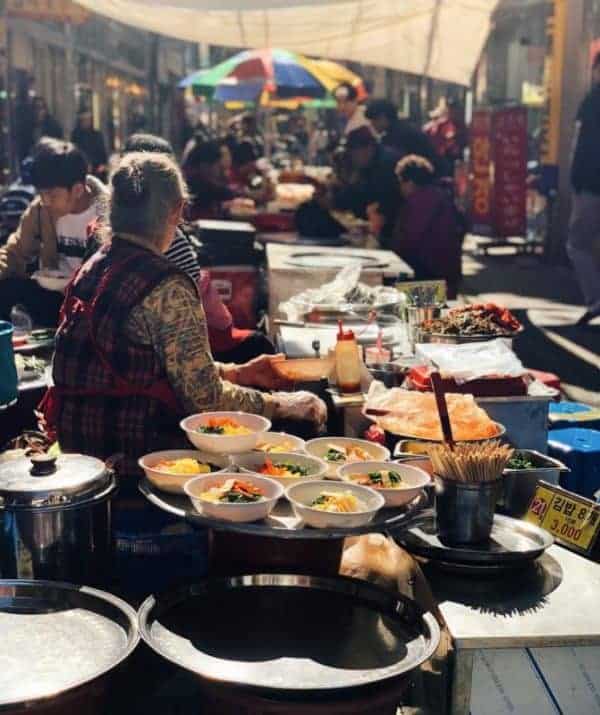
Korean food is far more than just Korean BBQ. The rich, hearty soups and stews are a delight when travelling in Korea at any time of year, but they are particularly comforting in the winter months.
For reference, be on the lookout for foods that have guk (국), tang (탕) or jjigae (찌개) in their titles. These are soups that guarantee the maximum warmth factor.
Warming Winter Foods to Eat in Korea
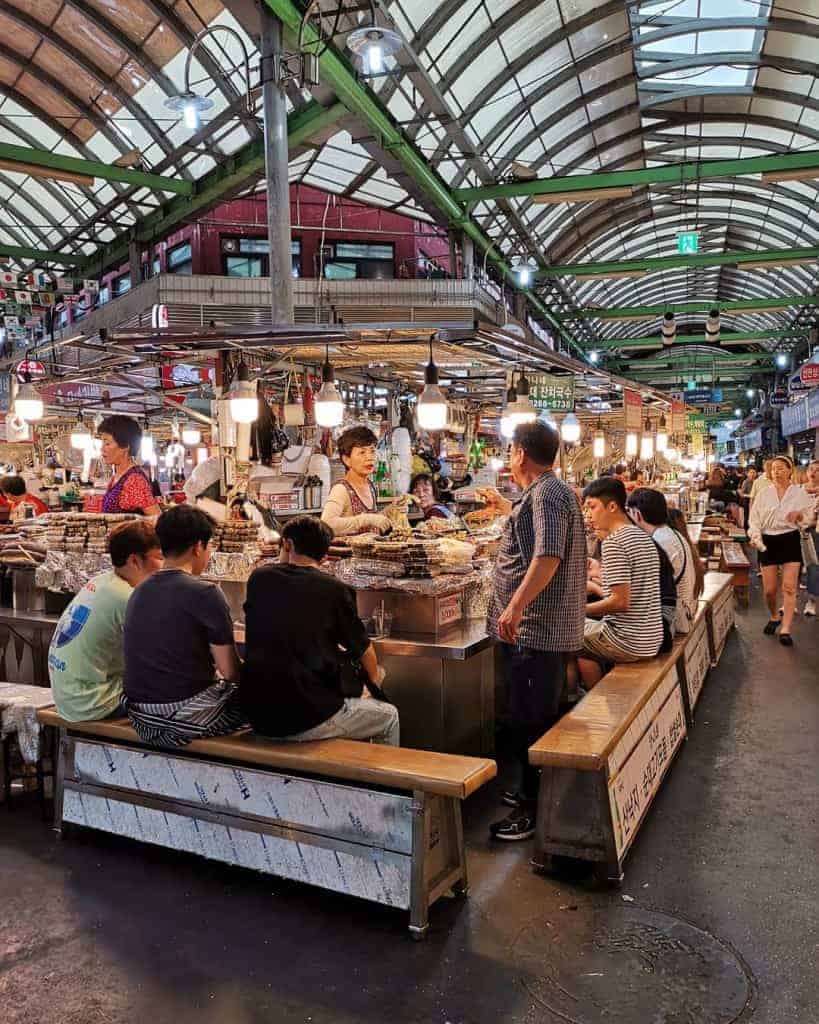
Some suggested foods to sample during your Korea winter trip are detailed below. You can find these at traditional restaurants across Seoul and beyond.
Ttukbaegi Bulgogi (뚝배기불고기)
Delicious marinated beef stew served with veggies in a piping hot earthenware pot.
Ttokkbokki (떡뻑기)
Tteokkbokki is delicious chewy rice cakes that are served in a spicy gochujang sauce. You can enjoy a little cup of tteokbokki for as little as $1 and they are one of the most common Korean street food delicacies.
Kimchi Jjigae (김치찌개)
Spicy kimchi soup. Variations of kimchi jjigae are available. Commonly this is served with onions, chopped pork, tofu or seafood.
Galbitang (갈비탕)
A hearty, nourishing soup served with beef short ribs that are marinated with onion and garlic.
Dolsot Bibimbap (돌솥 비빔밥)
Bibimbap is a rice pot dish that could essentially be considered the national dish of Korea. This is served with ground beef, rice, fresh veggies, chilli sauce and an egg.
Dolsot bibimbap comes in a piping hot earthenware pot that cooks the rice to crunchy perfection. Bibimbap was invented in Jeonju, but you can find good variations of the dish virtually everywhere.
Korean Winter Street Foods
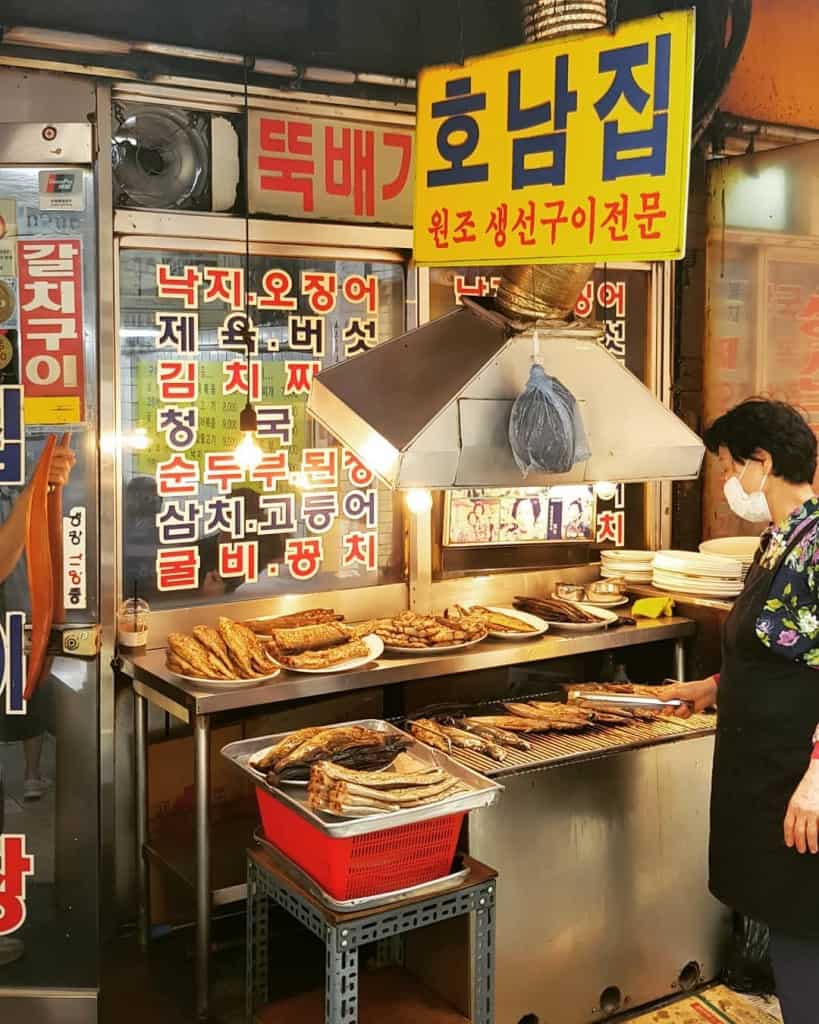
Street food culture is huge in Korea. You can find vendors all over the Korean towns and cities.
A great cultural experience is to enjoy one of the traditional dishes mentioned below while sitting beneath a pojangmacha tent at a bustling food market like Gwangjang.
Roasted Sweet Potatoes (군’고구마)
During the Korean winter season, dozens of street vendors set up stalls around the city and serve warm, delicious sweet potatoes cooked and seasoned to perfection.
Roasted Chestnuts (군밤)
Roasted chestnuts, pure and simple. You can find these everywhere.
Bungeoppang (붕어빵)
Bungeoppang is a favourite street food dessert during the Korean winter season. These are sweet pastries that are filled with delicious sweet red bean (adzuki bean).
For a few dollars, you can get a bag of 10-15 pastries. They are often made in obscure shapes, commonly in the shape of fish.
Hotteok (호떡)
Sweet pancakes served with sugar, honey or cinnamon.
Gyeranppang (계란빵)
Korean egg bread. Gyeranppang is a warm, sweet mini bread loaf with a whole egg inside. (It’s more delicious than it sounds!)
Manju (만주)
Manju is available all year round in Korea but it makes for a perfect comfort snack during the winter. Similar to bungeoppang, manju are little sweet pastries that are filled with hot custard. There are manju stalls at almost every underground subway station in Seoul.
Korea in Winter: Final Thoughts
Have any further questions or concerns about traveling to Korea in winter or places to visit in Korea during winter? Feel free to reach out and let me know!
I spent two years living in Seoul so I know a thing or two about travelling through Korea in the winter. Safe travels! Annyeonghaseyo, Melissa xo
For more generalised Korean advice, take a peek at this comprehensive Korea Travel Guide as written by a local in Seoul. (me!)
